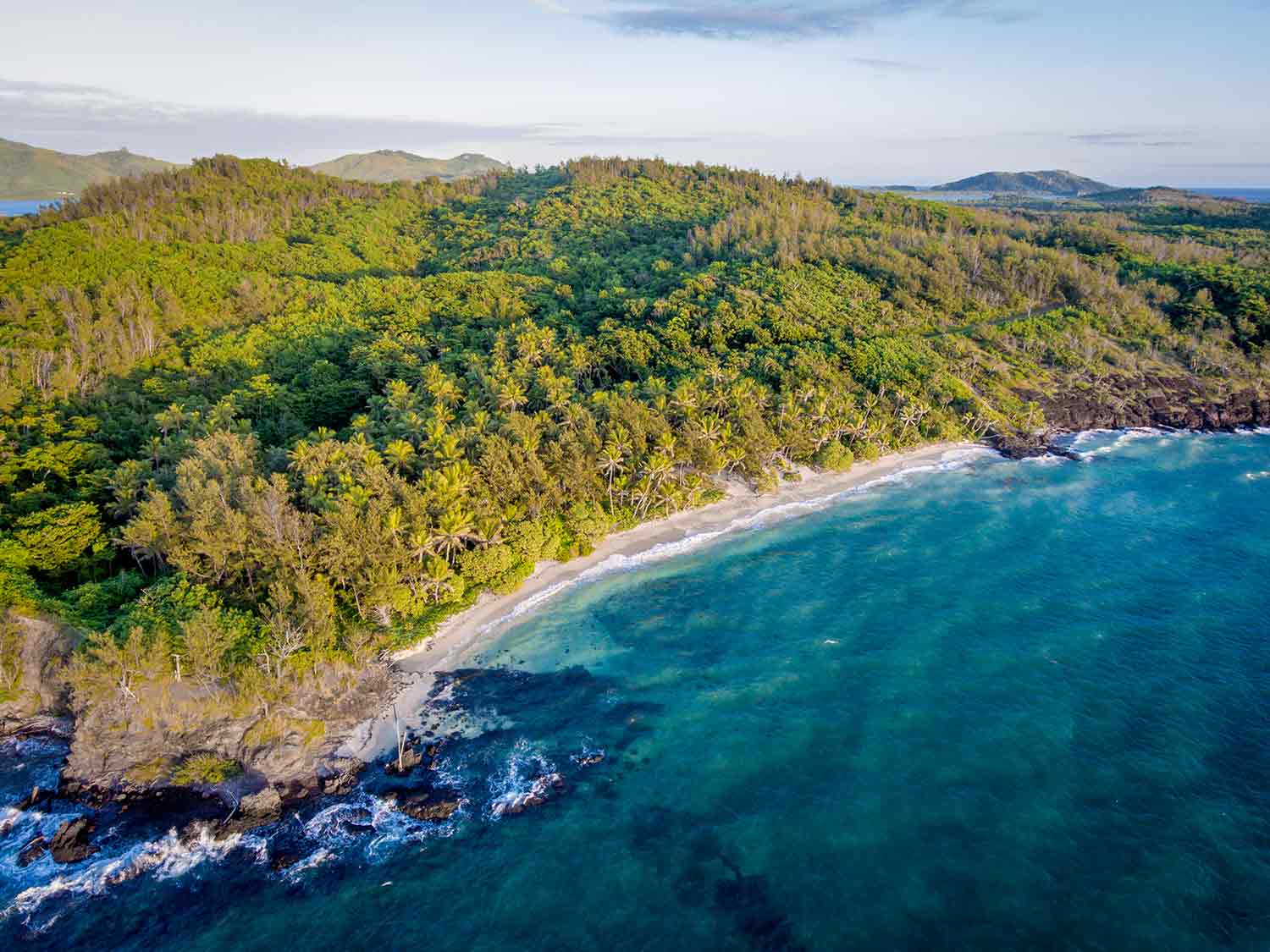Fiji's Turtle Island Wants You To Be Part Of The Family
There are some destinations that transform themselves. And then there are some that transform you. Turtle Island is that place.
Turtle Island was once a barren, deserted island lost among the archipelago of 20 volcanic islands in the South Pacific. But U.S. entrepreneur Richard Evanson changed that.
Looking to escape the frenzy of corporate life, he found himself in a bar in Fiji, making a deal to buy the 500-acre Nanuya Levu island over cocktails. He journeyed to the island with nothing but a generator, refrigerator and tent. A villager from a neighboring island saw his helicopter land and, out of curiosity, made his way over by boat. They became fast friends and together, along with other villagers, they planted over 500,000 trees and began transforming the island into a private, tropical paradise.
Evanson loved the seclusion, but in the late 1970s Columbia Pictures took notice of the island while scouting for a destination to film a remake of Blue Lagoon. He was ambivalent, but soon found himself building wood and straw huts, or Fijian bures, for the film crew. He realized the potential of the island as an escape, and in 1980, welcomed his first guests.
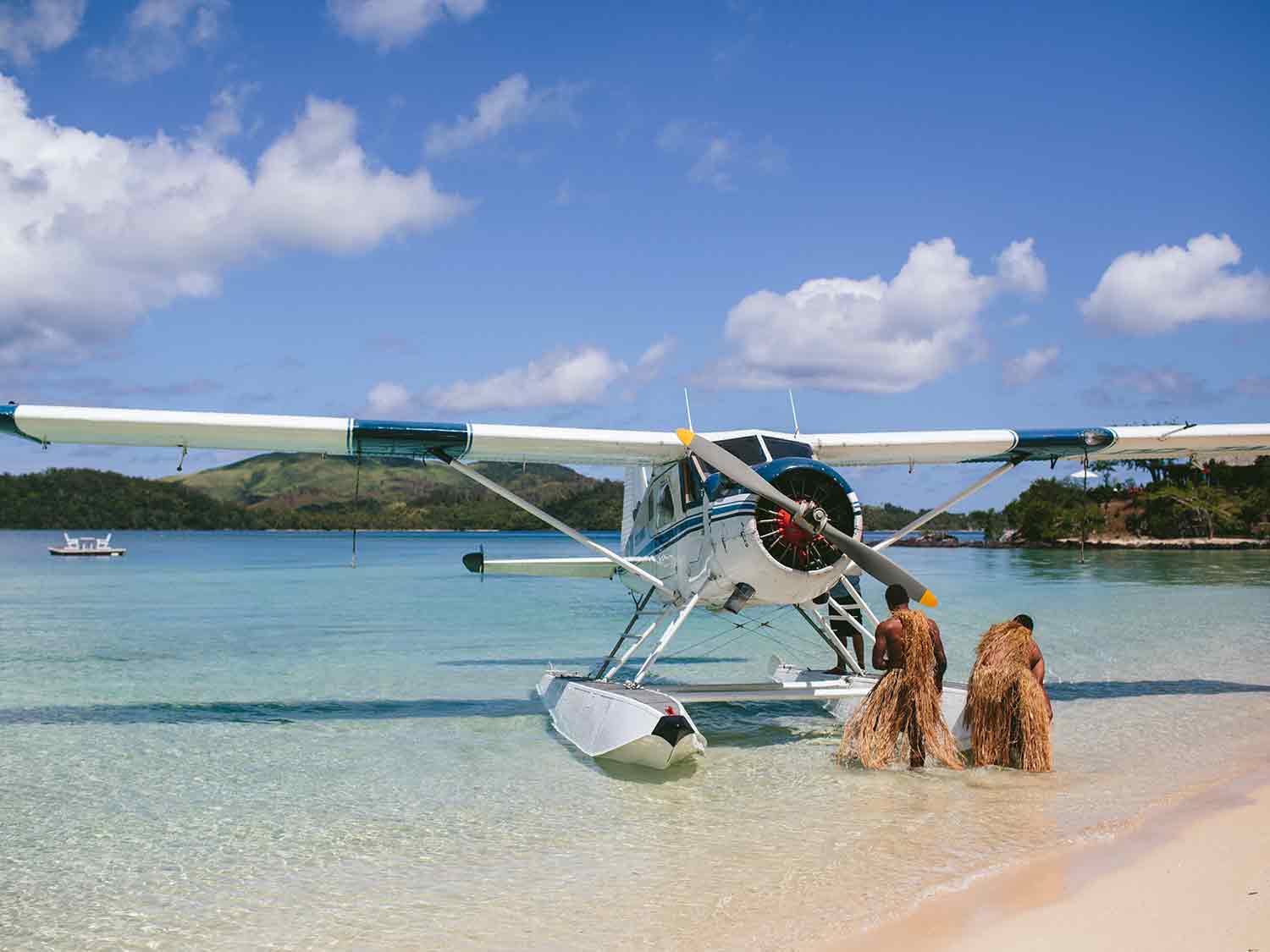
You'll understand the allure of Turtle Island long before you even set foot on its white sandy beaches. Our seaplane pilot greeted us with bare feet and I immediately knew he was transporting us somewhere magical. The journey is always part of the destination and this 30-minute flight gliding over the South Pacific was breathtaking.
As the plane skied toward the island, we were met by island warriors in grass skirts who created a chariot with their arms to carry me over the water, lest I get my travel-weary feet wet. That was my first inkling that I was about to be completely indulged and pampered for a week.
The island's staff lined the beach in colorful Fijian dress, singing a native greeting and welcoming us into the family with warm hugs and a genuine, "Welcome home!" You don't know it at the time, but this place will soon become home for you. And I'll warn you, they're all huggers. Not just that first day, but every day. Every time they see you. Even those behind the scenes learn each guest's name and no matter who you encounter on the island, you'll hear an enthusiastic, "Bula, Beth!" You're not a guest. You're part of the family. This is home.
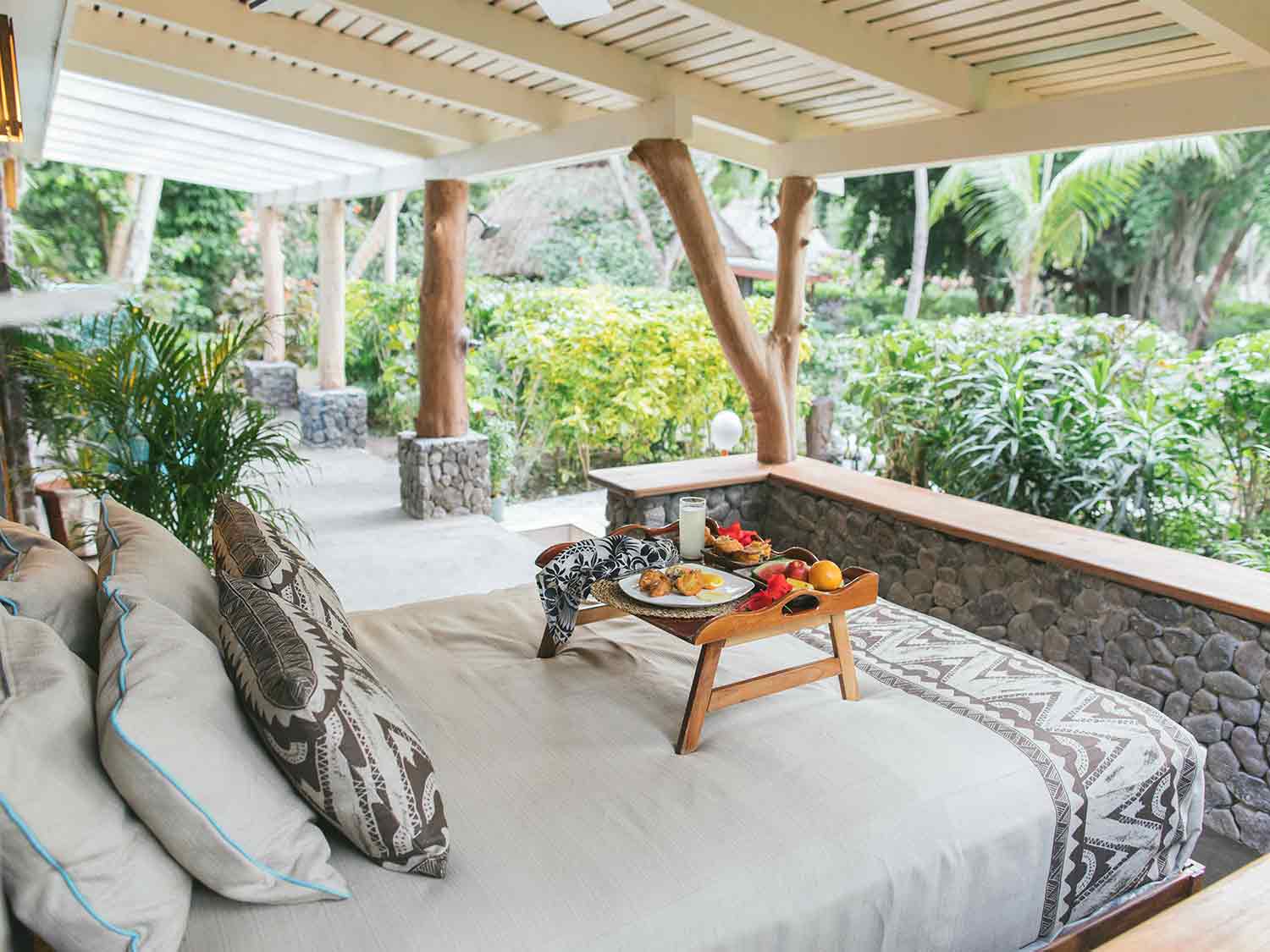
Our bure Mama, Elle, greeted us and escorted us to the luxury villa that would be home for the next week. There are only 14 bures spaced across the island which means at any given time, there are no more than 28 guests as your island mates (save for a few weeks a year when families with children are welcomed). The staff averages 100, so do the math — that's four staff members per guest to tend to your every want and need, whim and desire. And they all live on the island, at your beck and call 24/7.
The bures are works of art. Literally. The furniture is all hand-crafted onsite by Fijian craftsmen, most of it made using sustainable and upcycled materials indigenous to the island primarily fallen trees and limbs. The Fijians are master wood carvers, incorporating traditional cultural patterns into all of the island's decor. You just need to look up at the arched ceiling of your bure, tied with ropes with intricate carvings of the bure number, to appreciate the craftsmanship.
The furniture is rustic yet elegant, from the four-poster beds to the artisanal trees that separate the living spaces to functional desks and tables. The furnishings remind you that you're here to be indulged including the in-suite hot tub and a comfy daybed on your front porch for afternoon naps.
Bure Mamas and Papas are part butler, part best friend, part parent. Their role is to tend to a guest's every desire from breakfast in bed to arranging for a private dinner on a floating dock to packing your day bag for a picnic at one of the island's private and secluded beaches. Elle quickly learned that my happy place was a hammock in the shade that caught the perfect ocean breeze, and she'd intuitively bring me fresh coconut water (in the coconut) or a pillow from our daybed to make me more comfortable. She often had to wake me for lunch with a gentle, "Bula, Beth."
Our clothes were freshly laundered daily and our cookie jar filled with still-warm-from-the-oven brownies and cookies. There was always a bottle of wine chilling on our counter after we returned from a long day of our own type of chilling.
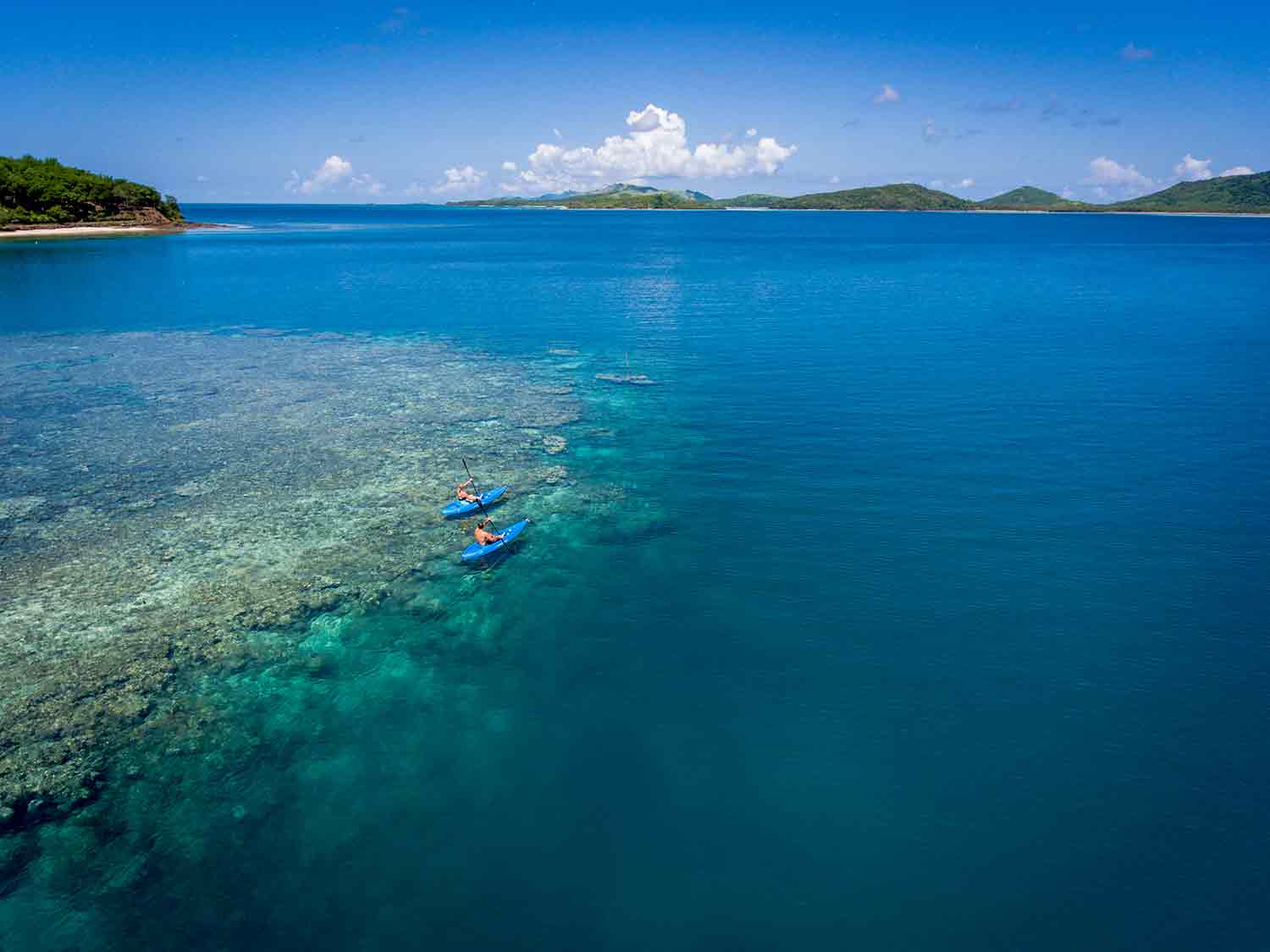
Turtle Island is the kind of place where you don't wear shoes. And you certainly don't carry a phone. Your bure Mama or Papa will arrange for daily activities that may include relaxing on one of the island's ten private and secluded beaches — among them, Nudy Beach and Honeymoon Beach for the romantic or Shell Beach for the adventurous.
My husband went diving daily while I caught up on a year's sleep in my hammock, lulled to sleep by nothing but the soft ocean waves. We rode horses to the island's highest point to watch the sunset (sunrise is even more beautiful but I could not will myself to get up that early). I splurged on the 4-hand Lomi Lomi massage at the island's spa and my body was a melted mess the rest of the day. There is no shortage of activities from snorkeling to kayaking to hiking if that's how you choose to spend your day.
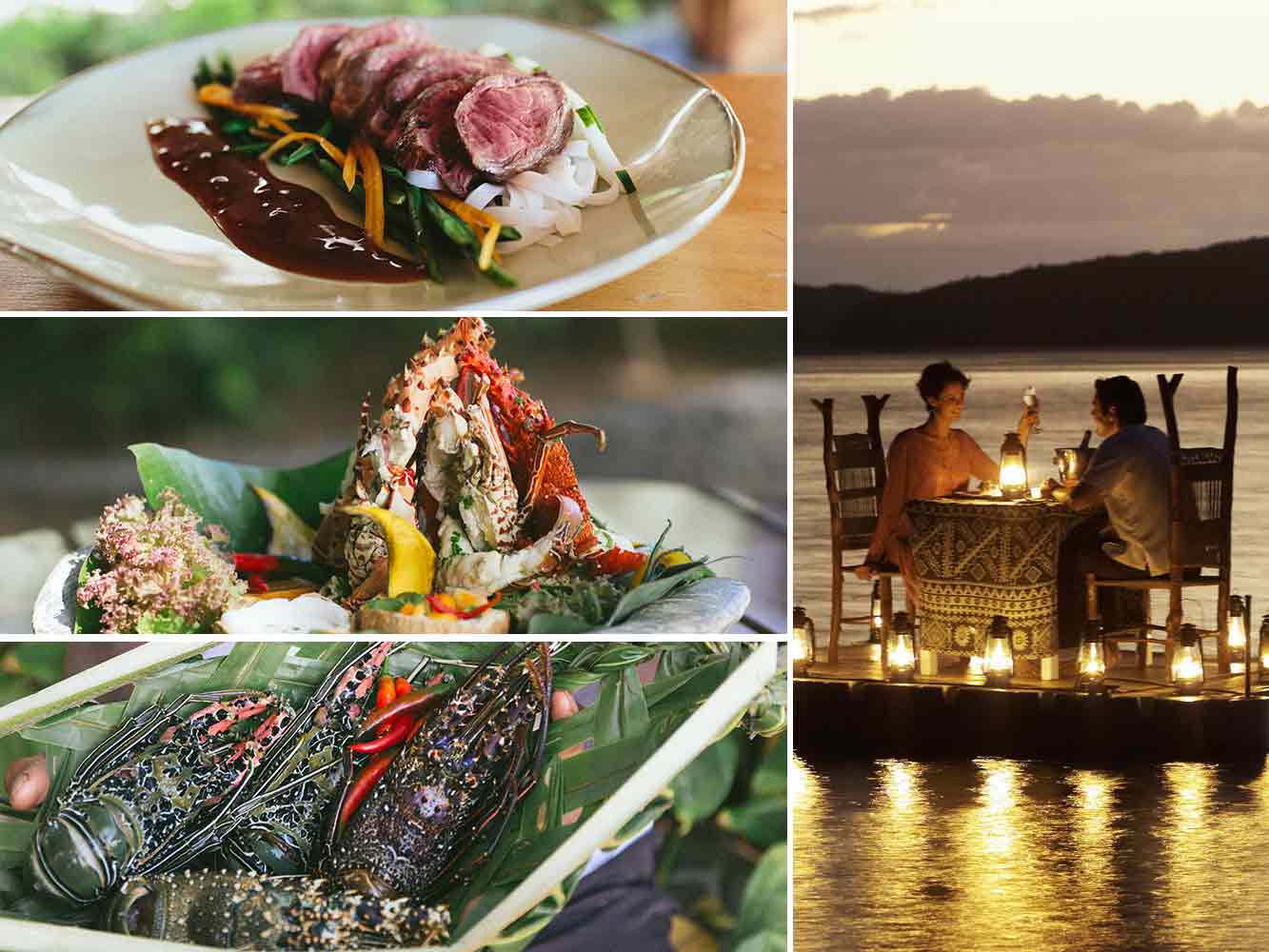
Dining is communal at a long, festive table on the beach. There are private "dine outs" available on mountaintops or on floating docks, but enjoying a meal with other guests and sharing experiences is part of the charm of Turtle Island.
One evening, the chef treated us to a farm-to-table dinner among the resort's 155 vegetable beds that provide 80 percent of the resort's produce. Shellfish and seafood arrive fresh daily from local fishermen. We enjoyed a traditional lovo dinner where the entire meal was cooked underground in straw baskets we helped make at the morning's basketweaving class.
The cuisine is simple yet nothing short of decadent and indulgent. The simplest fish dish is transformed with a lime and coconut milk sauce. The garden's plethora of greens were always the perfect accompaniment. Classic French sauces and pastries are often woven into the menu.
In the evening, you're reminded that you're not just a visitor, you're a Fijian, welcomed home as you take part in a traditional kava ceremony. As if you really need something to help you unwind, but joining the staff in their evening ritual is part of the experience.
I found that time stands still on Turtle Island. The days are inexplicably long. But in a good way.
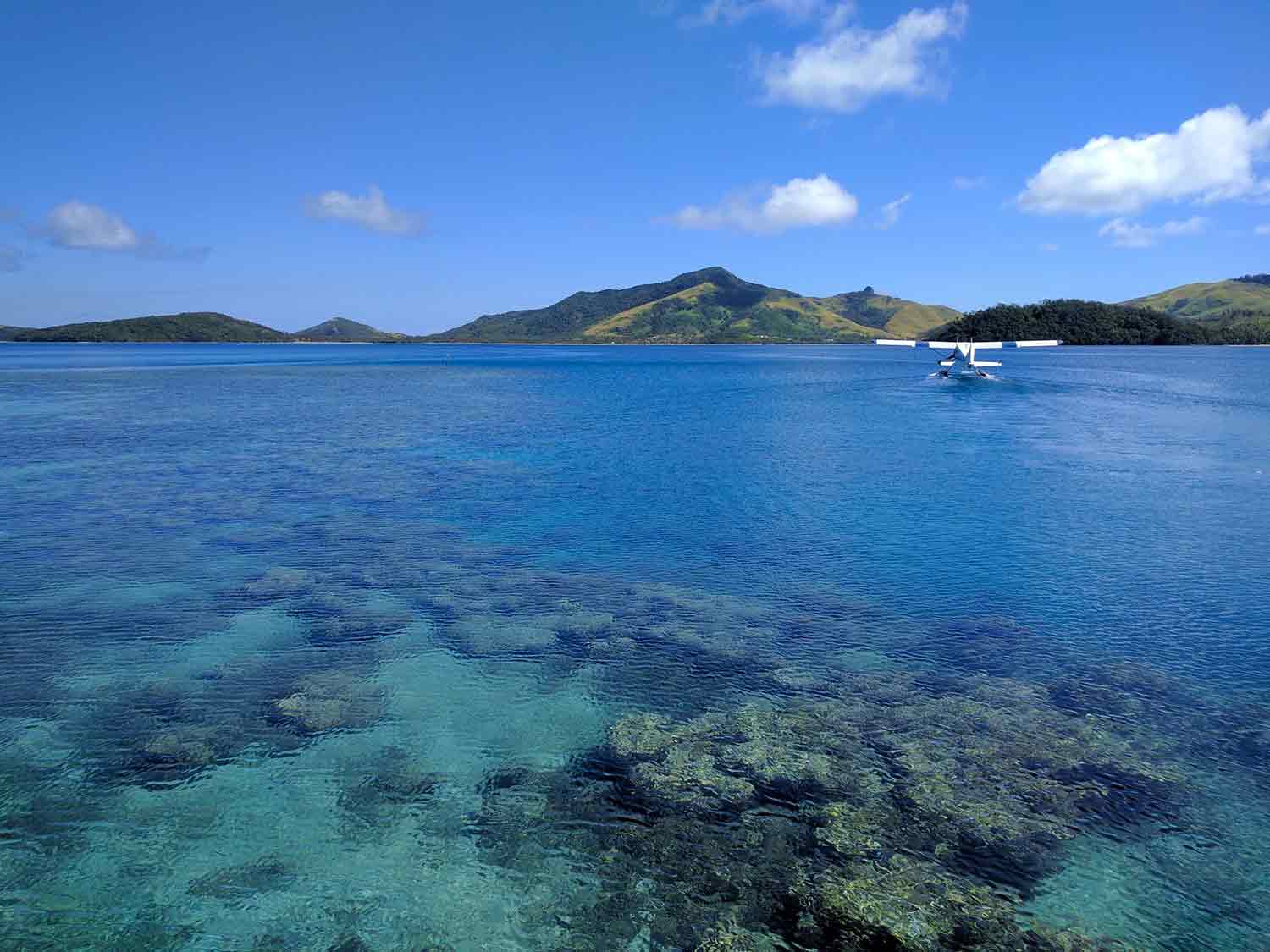
Sustainability is part of the culture. The island's staff come from seven local villages where daily life is quite contrary to that on Turtle Island. The island supports these communities through educational scholarships for youth and a Turtle Island Community Fund that helps fund local projects. The Turtle Conservation Program is a partnership with the World Wildlife Fund to support the sustainability of the species. Each guest also plants a tree on the island, a welcome excuse to return to your roots someday.
I have never cried leaving a vacation but as we walked the long dock to the seaplane, the entire staff was lining our path singing a farewell song, and my eyes welled with tears. I felt their genuine love. We were family after all.
In a world that can be unkind at times, it's nice to go to a place that exudes kindness. Authentic kindness. At its very core. This is not a destination where its location, or beaches, or activities are the main attraction. Those features are spectacular, but it's the people, the staff, that make it so special. I can't wait to go back home to my Fijian family.
